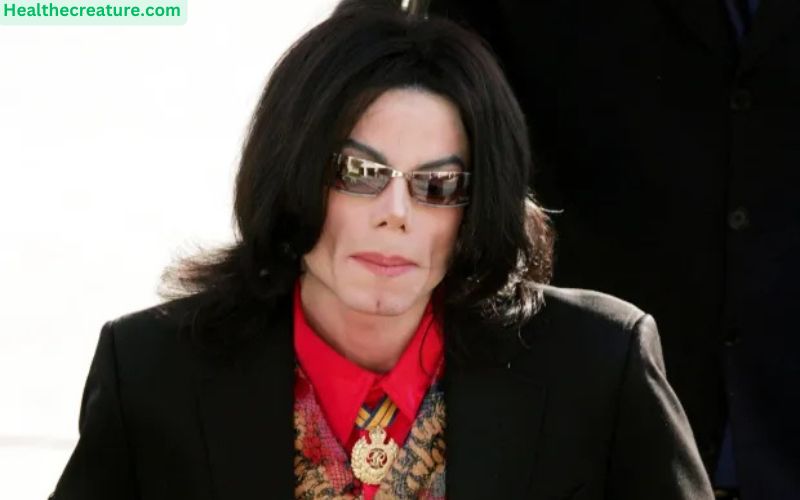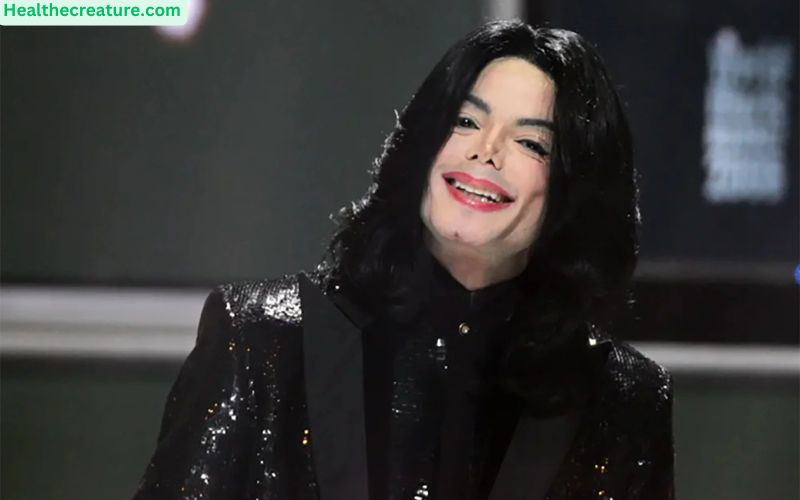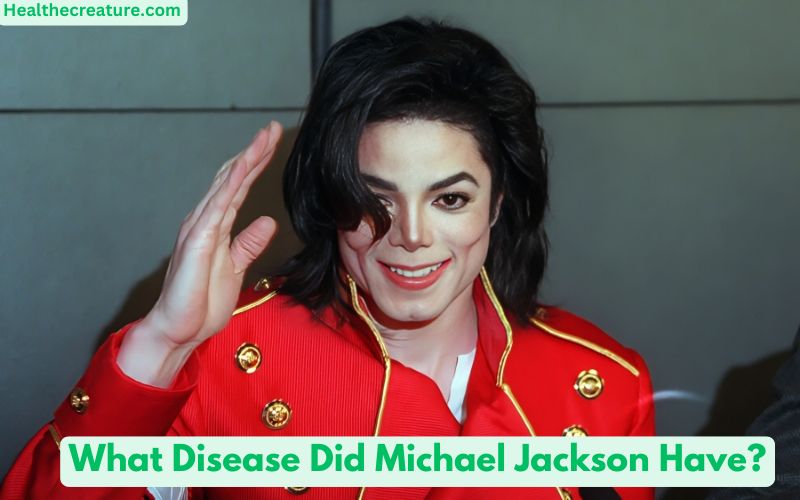Michael Jackson, often regarded as the “King of Pop,” was an iconic figure in the world of music, dance, and entertainment. Throughout his life and career, he was known not only for his unparalleled talent and distinctive style but also for his evolving appearance, which became a point of curiosity, speculation, and controversy. Beyond the public’s intrigue with his physical transformation, Michael Jackson faced real and often debilitating health challenges. Understanding these conditions helps clarify how they impacted his life and career.
This article explores the primary health issues that Michael Jackson dealt with, including vitiligo, lupus, and other conditions, which contributed to the changes in his appearance and, ultimately, his untimely death.
Vitiligo: The Primary Skin Condition
One of the most noticeable changes in Michael Jackson’s appearance was his skin color, which appeared to gradually lighten over the years. The explanation, as provided by Jackson himself and later confirmed by his dermatologist, was a skin condition known as vitiligo.
What is Vitiligo?
Vitiligo is a chronic skin disorder characterized by the loss of pigment in certain areas of the skin, leading to white patches. This occurs when melanocytes, the cells responsible for producing skin pigment (melanin), are destroyed or stop functioning. The cause of vitiligo is not entirely understood, but it is widely believed to be an autoimmune disorder, in which the body’s immune system mistakenly attacks healthy cells.
Symptoms and Impact of Vitiligo
Vitiligo can start with small white patches on the skin that may spread and become more noticeable over time. These patches can appear on any part of the body, including the face, hands, and other exposed areas.
In Jackson’s case, it began as small patches, likely on his hands or face, that progressively spread across his body. People with darker skin tones often experience more pronounced contrasts between the affected and unaffected areas, making the condition more visible.
Treatment and Management
Vitiligo has no known cure, but treatments can help manage its appearance. These treatments may include:
- Topical Corticosteroids: These help to reduce inflammation and slow the spread of depigmentation.
- Phototherapy: This involves exposing the skin to controlled amounts of ultraviolet (UV) light, which may help restore some pigmentation.
- Depigmentation Therapy: For widespread vitiligo, some choose depigmentation treatments to lighten the remaining pigmented areas to create a more uniform skin tone.
Michael Jackson reportedly opted for depigmentation treatments, which would explain his gradually lightening skin tone. In 1993, he spoke about his condition publicly during an interview with Oprah Winfrey, dispelling rumors about skin bleaching or other cosmetic procedures.
Lupus: Another Autoimmune Disease
In addition to vitiligo, Michael Jackson was also reported to have been diagnosed with lupus erythematosus, commonly referred to as lupus. Like vitiligo, lupus is an autoimmune disease, which occurs when the immune system attacks healthy tissue in the body. Lupus can have a wide range of symptoms and affects each person differently.
What is Lupus?
Lupus is a chronic autoimmune disease in which the immune system attacks the body’s own tissues, causing inflammation and tissue damage. It can affect various organs, including the skin, joints, kidneys, heart, lungs, and brain. Lupus may lead to skin rashes, fatigue, joint pain, and even organ failure in severe cases.
Symptoms of Lupus and Its Effects on Jackson
Lupus symptoms can be difficult to manage due to their variability. They may include:
- Skin Rash: A characteristic “butterfly” rash across the cheeks and nose is common, but other types of rashes can occur.
- Photosensitivity: People with lupus often have heightened sensitivity to sunlight, which can trigger skin reactions or rashes.
- Joint Pain and Fatigue: Chronic pain and extreme fatigue are common in lupus patients.
- Organ Involvement: Severe cases may affect internal organs, including the kidneys and heart.
For Jackson, lupus may have exacerbated his skin issues and increased his sensitivity to sunlight, further complicating his battle with vitiligo. His diagnosis reportedly came in the 1980s, around the same time that he began to notice changes in his skin color.
Cosmetic Surgeries and Physical Transformation
In addition to his diagnosed health conditions, Michael Jackson underwent multiple cosmetic procedures over the years. Though he initially had only a few procedures, speculation and rumors about his appearance increased as his looks evolved.

Why Did Michael Jackson Undergo Cosmetic Surgery?
Michael Jackson’s reasons for cosmetic surgery likely stemmed from a combination of personal insecurities, professional demands, and possibly his health conditions. Jackson’s father, Joseph Jackson, was known to be highly critical, even making comments about young Michael’s physical appearance. This may have contributed to a sense of insecurity that lasted into adulthood.
Jackson’s initial procedures reportedly included rhinoplasty to correct a broken nose following a dance rehearsal injury. Over time, however, he underwent further surgeries, resulting in a dramatically altered appearance. Some experts suggest that his surgeries were attempts to refine his looks due to the visibility of vitiligo and lupus scarring.
Health Risks and Complications from Cosmetic Surgery
Multiple surgeries over a short period can pose several risks, including scarring, infection, and respiratory issues. It is believed that Jackson’s history of cosmetic surgery contributed to his reliance on prescription medications to manage post-surgical pain and anxiety.
Chronic Pain and Prescription Medication Dependency
Jackson’s health challenges extended beyond visible symptoms. He reportedly dealt with chronic pain, partly from injuries and the aftereffects of surgeries. His 1984 Pepsi commercial accident, in which his hair caught fire due to a pyrotechnic malfunction, left him with second and third-degree burns on his scalp. This injury necessitated several reconstructive surgeries, leading to more physical pain and possible dependency on pain medications.
Pain Management and Addiction Concerns
As a result of chronic pain, Jackson was prescribed various painkillers and sedatives. Over time, he developed a dependency on these medications. This dependency became more severe in the years leading up to his death, and his need for medication was further exacerbated by the stress of preparing for his final concert tour, This Is It.
Jackson’s primary physician, Dr. Conrad Murray, was later convicted of involuntary manslaughter for administering a lethal dose of propofol, a potent anesthetic typically reserved for surgical procedures, to help Jackson sleep.
Body Dysmorphia and Mental Health Challenges
Many people believe that Michael Jackson may have suffered from body dysmorphic disorder (BDD), a mental health condition characterized by obsessive thoughts about perceived flaws in physical appearance. Individuals with BDD may undergo frequent cosmetic procedures, attempt to camouflage perceived flaws, or avoid social situations due to intense self-consciousness.
Jackson’s obsession with his physical appearance, coupled with repeated surgeries, is often cited as a potential indicator of BDD. While Jackson never publicly acknowledged this diagnosis, his behavior and repeated surgical procedures suggest that his relationship with his appearance was deeply complicated.
Impact on His Mental Health
Beyond BDD, Jackson’s life was also marked by intense scrutiny and media attention. The constant public pressure and relentless tabloid coverage likely took a toll on his mental health. In interviews, Jackson expressed feelings of loneliness and isolation, compounded by the pressures of fame and his responsibilities as an artist.
Michael Jackson’s Legacy and Public Perception

The public perception of Michael Jackson’s health struggles was, at times, shrouded in speculation, often driven by a lack of understanding about his conditions. This speculation led to hurtful rumors and misunderstandings, such as the false belief that he intentionally bleached his skin. His decision to address his vitiligo diagnosis publicly helped clarify some of the changes in his appearance, although other health issues, like lupus and his prescription medication use, were not fully acknowledged until after his death.
The Impact of Health on His Life and Career
Jackson’s health issues, both physical and mental, had profound effects on his personal life and professional career. His skin conditions and chronic pain management impacted his ability to perform and even led him to modify his routines and wardrobe.
Despite these challenges, Jackson’s resilience and dedication to his craft allowed him to continue creating and performing at an extraordinary level. His health conditions may have made his journey more difficult, but they also underscored his determination to pursue his passion in the face of adversity.
Lessons Learned and Ongoing Conversations
Michael Jackson’s life sheds light on the difficulties faced by individuals with chronic health conditions and the impact of public scrutiny on mental health. His openness about vitiligo helped increase awareness of the condition and reduce stigma around it. However, his struggles with pain management and dependency on prescription medication highlight the challenges of managing chronic pain, especially under the pressure of a high-profile career.
See Also: What Disease Did Gypsy Rose Mom Have?
FAQs
What skin condition did Michael Jackson have?
Michael Jackson had vitiligo, a skin disorder characterized by the loss of pigmentation in certain areas of the skin, leading to white patches. This condition caused his skin to lighten gradually over time, a transformation that became noticeable throughout his career.
How did vitiligo affect Michael Jackson’s appearance?
Vitiligo caused visible white patches on Jackson’s skin. As the condition progressed, the contrast between the affected and unaffected areas became more noticeable. He reportedly opted for depigmentation treatments to create a more uniform skin tone, resulting in a lightened complexion.
Did Michael Jackson have lupus?
Yes, Jackson was reportedly diagnosed with lupus, an autoimmune disease that can cause skin rashes, sensitivity to sunlight, joint pain, and fatigue. Lupus, along with vitiligo, further complicated his skin issues and may have heightened his sensitivity to sunlight.
Why did Michael Jackson undergo so many cosmetic surgeries?
Michael Jackson initially underwent surgery to correct a broken nose, but he later had multiple cosmetic procedures over the years. Some speculate that his surgeries may have been attempts to refine his appearance due to insecurities or to manage scarring from conditions like lupus and vitiligo.
Did Michael Jackson bleach his skin?
No, Michael Jackson did not bleach his skin. His lighter skin tone was due to vitiligo, a condition that destroys the pigment-producing cells. To create a more consistent skin tone, he likely underwent depigmentation treatments under medical supervision.
Conclusion
Michael Jackson’s legacy is one of immense talent, perseverance, and complexity. His battles with vitiligo, lupus, chronic pain, and possible body dysmorphia demonstrate the challenges he faced behind the scenes. Understanding these conditions provides a more nuanced perspective on his life and reminds us of the importance of compassion and awareness when discussing health issues.
While Michael Jackson’s life was filled with struggles, his achievements continue to inspire millions. His willingness to address his conditions publicly helped destigmatize certain issues, making him a cultural icon and an advocate for those facing similar health challenges. Through his music, dance, and indomitable spirit, Michael Jackson remains an enduring figure whose legacy transcends his health battles and underscores the resilience of the human spirit.


